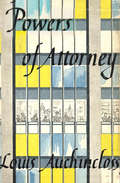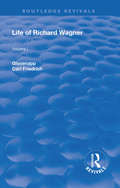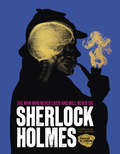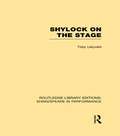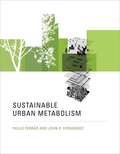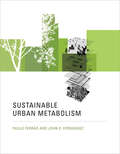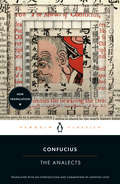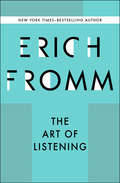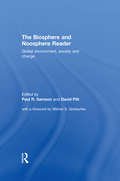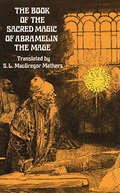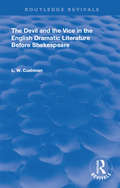- Table View
- List View
Powers of Attorney
by Louis AuchinclossTales that take you behind the scenes of a powerful New York law firm, from the New York Times–bestselling author of The Partners. Ambition, jealousy, desire, hatred, deceit—they&’re all there inside the Wall Street law offices of Tower, Tilney & Webb, the setting for these interwoven stories set in the 1960s from Louis Auchincloss, who practiced law while also writing acclaimed and bestselling fiction. Senior partner Clitus Tilney is not about to let a detestable, hard-drinking partner make a mockery of all he&’s worked for. Harry Reilley is a clerk who pines for Tilney&’s daughter. Jake Platt is an associate willing to do whatever it takes to achieve his goals, including setting a rival up for failure. Rutherford Tower struggles with the fact that he owes his position with the firm to nepotism and not hard work. And then there&’s Mrs. Abercrombie, who&’s waiting for her sixty-fifth birthday, when she plans to retire—and get her revenge. These twelve linked stories capture the struggles, rivalries, victories, disappointments, and compromises in the day-to-day lives of lawyers, and a portrait of professional men and women in mid-century New York.
Revival: New and Old (Routledge Revivals)
by George HowellPublic approval of a book is indicated by its sale. A second edition of this having been exhausted, my publishers deem it advisable to issue a third edition revised to date. In assenting, I have had to examine it thoroughly in order to see whether the work required correction, and, if so, to what extent. After careful perusal I find no reason to modify any sentence, withdraw any expression, or correct any statement of fact in its pages. Much has happened since it was written in 1890, the proofs finally revised in January 1891, but in all respects my views are unchanged 3 nor have the last ten years Shown cause for any abandon ment of the opinions then held. My conclusions have proved sound in all instances, even where I ventured to predict. I have therefore left the text untouched except for a few verbal emendations, and the restoration of two pages (soa and 595) which were unaccountably dropped out in going through the press. All that I desire to add has been compressed into a Supplementary Chapter, in which the several controversial points are dealt with, and statistics are brought up to date. The book was written in the heat of controversies to which illusion is made, the somewhat severe criticisms being justified by the then facts and circumstances. If they now appear to be harsh, it is because the policy then denounced has been abandoned, or so modified as to be no longer open to the condemnation then pronounced.
Revival: The Art Work of the Future (Routledge Revivals)
by Carl Friedrich GlasenappThis volume brings our story down to 1843, an important era in Richard Wagner’s Life, with his entry, as composer, of two successful operas, upon a so-called "practical" career at one of the principal German theatres.
Sherlock Holmes: The Man Who Never Lived And Will Never Die
by OtherEver since his creation, Sherlock Holmes has enthralled readers. Our perception of him and his faithful companion, Dr Watson, has been shaped by a long line of film, TV and theatre adaptations. This richly illustrated book, compiled by Alex Werner, Head of History Collections at the Museum of London, is an essential guide to the great fictional detective and his world. Using the museum's unrivalled collections of photographs, paintings and original artefacts, it illuminates the capital city that inspired the Sherlock Holmes stories, in particular its fogs, Hansom cabs, criminal underworld, famous landmarks and streets. Accompanying the landmark exhibition at the Museum of London, the first since 1951, this book explores how Arthur Conan Doyle's creation of Sherlock Holmes has transcended literature and continues to attract audiences to this day. Authoritatively written by leading experts, headed by Sir David Cannadine, this thought-provoking companion sheds new light on the famous sleuth and reveals the truth behind the fiction, over 125 years after the first Sherlock Holmes story was written.
Short Talks (Colportage Library #91)
by Dwight L. MoodyIn his classic work Short Talks, D.L. Moody's earnestness and care for the spiritual health of his readers is evident as he emphasizes God's forgiveness of sin, fellowship with His people, offering of new life through His Son's sacrifice, and giving His people the Holy Spirit. Challenge yourself to better understand many matters of the Christian faith.
Short Talks (Colportage Library #91)
by Dwight L. MoodyIn his classic work Short Talks, D.L. Moody's earnestness and care for the spiritual health of his readers is evident as he emphasizes God's forgiveness of sin, fellowship with His people, offering of new life through His Son's sacrifice, and giving His people the Holy Spirit. Challenge yourself to better understand many matters of the Christian faith.
Shylock on the Stage (Routledge Library Editions: Shakespeare in Performance)
by Toby LelyveldOriginally published in 1961, this book is a study of the ways actors since the time of Shakespeare have portrayed the character of Shylock. A pioneering work in the study of performance history as well as in the portrayal of Jews in English literature. Specifically it studies Charles Macklin, Edmund Kean, Edwin Booth, Henry Irving and more recent performers.
SpringBoard, English Language Arts, Grade 8
by Pat Bishop Susie Challancin Bryant CrispNIMAC-sourced textbook
Sustainable Urban Metabolism
by Paulo Ferrão John E. FernándezUrbanization and globalization have shaped the last hundred years. These two dominanttrends are mutually reinforcing: globalization links countries through the networked communicationsof urban hubs. The urban population now generates more than eighty percent of global GDP. Citiesaccount for enormous flows of energy and materials -- inflows of goods and services and outflows ofwaste. Thus urban environmental management critically affects global sustainability. In this book,Paulo Ferrão and John Fernndez offer a metabolic perspective on urban sustainability, viewingthe city as a metabolism, in terms of its exchanges of matter and energy. Their book provides aroadmap to the strategies and tools needed for a scientifically based framework for analyzing andpromoting the sustainability of urban systems. Using the concept of urbanmetabolism as a unifying framework, Ferrão and Fernandez describe a systems-oriented approachthat establishes useful linkages among environmental, economic, social, and technical infrastructureissues. These linkages lead to an integrated information-intensive platform that enablesecologically informed urban planning. After establishing the theoretical background and describingthe diversity of contributing disciplines, the authors sample sustainability approaches and tools,offer an extended study of the urban metabolism of Lisbon, and outline the challenges andopportunities in approaching urban sustainability in both developed and developing countries.
Sustainable Urban Metabolism
by Paulo Ferrao John E. FernandezA unified framework for analyzing urban sustainability in terms of cities' inflows and outflows of matter and energy.Urbanization and globalization have shaped the last hundred years. These two dominant trends are mutually reinforcing: globalization links countries through the networked communications of urban hubs. The urban population now generates more than eighty percent of global GDP. Cities account for enormous flows of energy and materials—inflows of goods and services and outflows of waste. Thus urban environmental management critically affects global sustainability. In this book, Paulo Ferrão and John Fernández offer a metabolic perspective on urban sustainability, viewing the city as a metabolism, in terms of its exchanges of matter and energy. Their book provides a roadmap to the strategies and tools needed for a scientifically based framework for analyzing and promoting the sustainability of urban systems. Using the concept of urban metabolism as a unifying framework, Ferrão and Fernandez describe a systems-oriented approach that establishes useful linkages among environmental, economic, social, and technical infrastructure issues. These linkages lead to an integrated information-intensive platform that enables ecologically informed urban planning. After establishing the theoretical background and describing the diversity of contributing disciplines, the authors sample sustainability approaches and tools, offer an extended study of the urban metabolism of Lisbon, and outline the challenges and opportunities in approaching urban sustainability in both developed and developing countries.
The Analects
by Confucius Annping ChinOne of the most influential books in human history, in a revelatory new translationThe book that the Chinese have returned to repeatedly for reflection, renewal, and validation of their own views, The Analects was compiled by the disciples of Confucius, China's earliest teacher and moral thinker, from his remarks and his conversations with rulers, political operators, and people he happened to meet. It laid the foundation of the Chinese idea of what is moral and what is politically viable, what is a good government and who has integrity. Featuring both the English and Chinese texts, this new translation, by one of the pre-eminent scholars of Confucius, draws on the most recent excavated manuscripts and centuries of scholarship to illuminate the historical context of Confucius' teachings, explaining who the many local figures referenced are, and navigating a rich tradition of historical commentaries. The result is a map of Confucian thought that brings us as close as possible to experiencing Confucius as his followers might have 2,500 years ago.
The Art of Listening
by Erich FrommThe renowned social psychologist and New York Times–bestselling author shares his insights on the process of psychotherapy, drawing on his own experience. Over the course of a distinguished career, Erich Fromm built a reputation as a talented speaker and gifted psychoanalyst—the first specialization of this polymath. The Art of Listening is a transcription of a seminar Fromm gave in 1974 to American students in Switzerland. It provides insight into Fromm&’s therapy techniques as well as his thoughts and mindset while working. In this intimate look at his profession, Fromm dismantles psychoanalysis and then reassembles it in a clear and engaging fashion. This ebook features an illustrated biography of Erich Fromm including rare images and never-before-seen documents from the author&’s estate.
The Biosphere and Noosphere Reader: Global Environment, Society and Change
by David Pitt Paul R. SamsonThe Reader is the first comprehensive history of the noosphere and biosphere. Drawing on classical influences, modern parallels, and insights into the future, the Reader traces the emergence of noosphere and biosphere concepts within the concept of environmental change. Reproducing material from seminla works, both past and present, key ideas and writings of prominent thinkers are presented, including Bergson, Vernadsky, Lovelock, Russell, Needham, Huxley, Medawar, Toynbee and Boulding, and extensive introductory pieces bu the editors drawattention to common themes and competing ideas. Focussing on issues of origins, theories, parallels and potential, the discussions place issues in a broad context, compare and contrast central concepts with those of the Gaia hypothesis, sustainability and global change, and examine the potential application of noospheric ideas to current debates about culture, education and technology in such realms as the Internet, space exploration, and the emergence of super-consciousness. Literally the `sphere of mind or intellect', the noosphere is aprt of the `realm of the possible' in human affairs, where there is a conscious effort to tackle global issues The noosphere concept captures a number of key contemporary issues - social evolution, global ecology, Gaia, deep ecology and global environmental change - contributing to ongoing debates concerning the implications of emerging technologies.
The Book Class
by Louis AuchinclossThe author of Exit Lady Masham explores the lives of twelve members of a high society ladies’ book club in New York over the course of sixty years.“If I have a bias it is in my suspicion that women are intellectually and intuitively superior to men,” writes Christopher Gates, the narrator of this book. “But,” he adds, “I certainly never thought they were “nicer.” And I very much doubt that anyone could think so who was raised, as I was, in a society in which the female had so many more privileges than the male.” Thus, he describes the twelve women who—as debutantes— instituted his mother’s “book class” in 1908 and met every month for over sixty years to discuss a selected title, old or new.During their lifetimes, these women did not have any real political or economic clout comparable to that of the men of their day. Only Adeline Bloodgood had ever held a regular job, and only Polly Travers, as a State Assemblywoman, ever played a formal role in politics. For Georgia Bristed, “the hostess had largely consumed the woman,” and Leila Lee was “a beauty in a day when simply being beautiful was considered an adequate occupation.”Although most of them were surrounded by a staff of servants and had no discernible responsibilities, these women still lived with serious intent backed by a considerable and undeniable power that in no way derived from “the snares and lures of womanly wiles.” Within the protected discipline of their surroundings, their lives were filled with drama and challenge—moments of passion, of betrayal and loyalty, of sweet revenge and joyless conquest, of irony and illumination . . .
The Book of the Sacred Magic of Abramelin the Mage
by S. L. MathersAround the turn of the century, when Aleister Crowley was working out his system of Magick, the source that he turned to for basics was the system of Abramelin of Egypt. From Abramelin he took his concepts of protections, purifications, evocations, vestments, and dromena down to specific details.This system of Abramelin the Mage is known from a unique fifteenth century manuscript preserved in the Bibliothèque de L'Arsenal in Paris. In it, Abraham of Würzburg, a cabalist and connoisseur of magics, describes a tour that he made of the then civilized world, visiting sorcerers, magicians, and cabalists, estimating their powers and virtues. This quest is in itself as fascinating as the similar tours of Gurdjieff.The high point of Abraham's travels was found in a small town on the banks of the Nile, where he encountered the great magician Abramelin, whose complete system Abraham thereupon sets out in detail. This amounts to a complete course in ceremonial magic (both white and black), which the student can pursue by himself.Abramelin, whose system is based mostly on Hellenistic theurgy of the Iamblichan sort, but with Jewish increments from the Cabala, explains the qualifications needed to become a magician, purifications, and asceticisms to be practiced month by month, studies and activities permitted during this period, selection of place and time for working magic, equipment needed, prayers and formulas, evocation of good and evil spirits, commanding spirits to do one's will, overcoming rebellious spirits, and similar material. Specific instructions are offered to develop such powers as clairvoyance, divining metals and treasures, warding off evil magic, healing illness, levitation, transportation, rendering oneself invisible, creating illusions and glamour, reading minds, placing compulsions, working black magic, and a host of other abilities.We do not guarantee that Abramelin's techniques work, nor that the results are desirable, but we offer this as a genuine medieval course in magic, one of the most important books in the history of occultism. It is of paramount importance to both the historian and the practitioner.
The Collected Works of W. B. Yeats Vol. VI: Prefaces and Introductions
by William Butler YeatsPrefaces and Introductions, Volume VI of The Collected Works of W.B. Yeats, brings together for the first time thirty-two introductions by Yeats to the works of such literary greats as William Blake, J.M. Synge, Lady Gregory, Oscar Wilde, Oliver St. John Gogarty, Lionel Johnson, and Rabindranath Tagore. The introductions, which span the Nobel laureate's entire career, reflect the broad reach of Yeats's literary and cultural interests. Writing of fairies, ghosts, and witches in his introduction to Fairy and Folk Tales of the Irish Peasantry, Yeats discovers that they were still extant in Ireland, at least in 1888, "giving gifts to the kindly, and plaguing the surly." In his preface to Stories from Carleton he tells of that sweetest ginger of Gaelic tunes, Mary Carleton, who was once asked to sing the air "The Red-haired Man's Wife" and replied: "I will sing for you, but the English words and the air are like a quarreling man and wife. The Irish melts into the tune: the English does not." And in distinguishing the Irish from the English poets of his day in A Treasury of Irish Poetry in the English Tongue, Yeats remarks: "Contemporary Irish poets believe in spiritual life, invisible and troubling, and express their belief in their poetry. Contemporary English poets are interested in the glory, the order, the passion or the pleasure of the world." Always insightful and often charming, Prefaces and Introductions reveals the breadth of Yeats's talent as essayist, critic, folklorist, and raconteur.
The Devil and the Vice in the English Dramatic Literature Before Shakespeare (Routledge Revivals)
by L. W. CushmanOriginally published in 1900, this book was the first investigation of the devil and the Vice as dramatic figures, and a study of these figures led to a new view of the subject: it is, in brief, that the appearance of the devil in the non-dramatic as well as in the dramatic literature is limited to a definite range. As a dramatic figure the devil falls more and more into the background and the Vice is distinct in origin and function from the devil.
The Lost Continent
by Charles John HyneThe finest tale ever written of fabled Atlantis, The Lost Continent is a sweeping, fiery saga of the last days of the doomed land. Atlantis, at the height of its power and glory, is without equal. It has established far-flung colonies in Egypt and Central America, and its mighty navies patrol the seas. The priests of Atlantis channel the elemental powers of the universe, and a powerful monarch rules from a staggeringly beautiful city of pyramids and shining temples clustered around a sacred mountain.Mighty Atlantis is also decaying and corrupt. Its people are growing soft and decadent, and many live in squalor. Rebellion is in the air, and prophecies of doom ring forth. Into this epic drama of the end of time stride two memorable characters: the warrior-priest Deucalion, stern, just, and loyal, and the Empress Phorenice, brilliant, ambitious, and passionate. The old and new Atlantis collide in a titanic showdown between Deucalion and Phorenice, a struggle that soon affects the destiny of an entire civilization.
The Lost Continent: Large Print
by Charles Wright HyneThe finest tale ever written of fabled Atlantis, The Lost Continent is a sweeping, fiery saga of the last days of the doomed land. Atlantis, at the height of its power and glory, is without equal. It has established far-flung colonies in Egypt and Central America, and its mighty navies patrol the seas. The priests of Atlantis channel the elemental powers of the universe, and a powerful monarch rules from a staggeringly beautiful city of pyramids and shining temples clustered around a sacred mountain.Mighty Atlantis is also decaying and corrupt. Its people are growing soft and decadent, and many live in squalor. Rebellion is in the air, and prophecies of doom ring forth. Into this epic drama of the end of time stride two memorable characters: the warrior-priest Deucalion, stern, just, and loyal, and the Empress Phorenice, brilliant, ambitious, and passionate. The old and new Atlantis collide in a titanic showdown between Deucalion and Phorenice, a struggle that soon affects the destiny of an entire civilization.
The Moon Metal
by Garrett P. ServissAfter huge gold deposits were found in Antarctica and gold became common, the world's financial markets went into a tailspin and every currency lost its value. As bankers meet to find a solution they are approached by one Dr. Syx, who has an evil sneer and a source of a new, mysterious metal to replace gold - a metal which only he can produce. It is up to two heroic engineers try to uncover the secret of this new metal...
